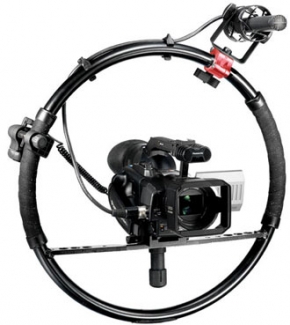Our brief was:
-The character receives a phone call
-The character is being told some bad news
-They try to call someone, but no-one picks up
-Character runs
-There's a panicked feeling, as they rush to get to the gatehouse
-Runs and arrives in the gatehouse
-Get in and open the door
-There's shock on their face but the audience don't see what they can see.
In the lesson we also discussed the 180' rule. When filming, you have to imagine an "invisible line," in which you have to stick to one side throughout the entire sequence. This is to ensure you don't confuse the audience and for the left/right, right/left to still apply...
For example a car shot- You can't film both sides of the invisible line as it will look as if the object is changing direction, so it won't make sense to the viewer.
I was in a group with Tom, Chloe and Kieran, and we had to film left-right. We thought it would be effective if we had some repetition to the piece, so we decided the location should be the Hiscocks corridors as a starting point.
Chloe is our main character, and started with her sitting down in a Hiscocks kitchen; she receives the phone call, (W/S to a CU of her reaction).
Chloe tries to redial but with no response, she jumps up and runs out of shot.
This is followed by a series of shots running through the corridors, (CU/OS/ feet shot etc)
A shot we definitely had to add in is the OH shot of Chloe running out of the halls and through the grass. This is where we considered health and safety as Tom has been elected to climb the tree and get the shot!
Our next sequence for the short piece was fun to shoot! We had recently done some celtx work on the film 'Bullit,' where we broke down a car chase. This inspired us to do some sort of car scene and was perfect as Chloe had a car! Of course, Health and safety is once again a big factor, as we took into consideration the car park, Chloe and crew's safety and anyone else around.
We got some interesting shots both inside and outside the car, CU's and WS's to mix it up and make it enjoyable to watch for the viewer and to give us more of a selection with order when it came down to editing it.
THE EDITING PROCESS:
Chloe and I edited the piece and thought the outcome was good and well thought out. We did have some trouble, eg There are shots of Chloe, (extreme W/A) running, and the next shot was her getting into her car- we definitely could have used with another shot in between to link the two motions together.
Also another problem we had occurred when keeping with our left-to-right shooting for the entire piece, and we shot Chloe driving up to a hault; right-to-left. Luckily we quickly learnt in Final Cut that you can "flop" (flip) your shots, to make it work. PERFECT!
We wanted to use quick, short cuts throughout to emphasise the "rush" and urgency of where she needed to get to.. we've contrasted this with one of the last shots, where Chloe is running to the gatehouse, whee we held the shot for about 5 secs in the same position. I just thought it created an interesting change.
I'm getting better at logging and capturing, checking the settings and saving the project beforehand. We did have some trouble getting the footage online to use for every computer, in which Mike stepped in and came to the rescue!
MERGING WORK TOGETHER:
We were then paired together with a group who shot in Right-to-left so we could experiment merging shots together to create another story.
This was a lot of fun! And it really showed me how much of an essential role an editor has because they can create a different story after story with the same footage. I edited a version of the two pieces of footage, in which we chose to use for the final piece; and when I looked at other mates work, I could see how everyone can approach the footage with a different mind set.
I tried to make my final edit funny... with the conclusion being Mike being the person calling Chloe, and Chloe 'chasing' Mike to the gatehouse, so almost like a race, having called him again, running to her car to catch him. This, in turn, caused Mike to start running in the opposite direction, (right-left).
In another attempt to create a humorous under tone, I sped up Chloe's long shot running to the gatehouse.
Final Product:
Oh My GOD! from Rachel Sowden on Vimeo.











